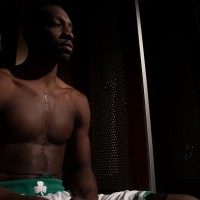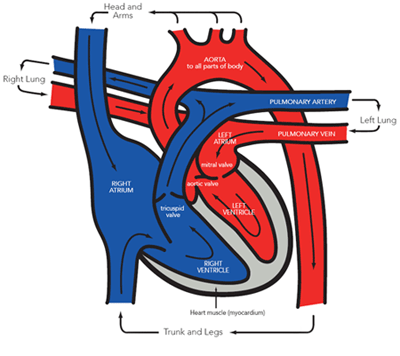Jeff Green’s Heart Surgery Breakdown

The Boston Celtics entered this season with a lot of questions about their roster. Ray Allen left for Miami, Father Time continues his assault on Paul Pierce and Kevin Garnett, and the Rajon Rondo conundrum continues. However, it appears the Celts may have found at least one answer for the future in Jeff Green. His recent play has invigorated the Celts, as he has averaged over 17 PPG on almost 50% shooting since the beginning of March. Highlights include his 43 point masterpiece against the streaking Miami Heat, leading the Celts to a near-win with 43 points on 14-21 shooting, his game winner against Cleveland on March 28, and his 26 point performance in game 1 against the Knicks at MSG.
Drafted 5th overall by Boston in 2007, Green was traded to the Seattle Supersonics immediately for Ray Allen (among others), then reacquired at the trade deadline in 2011 in exchange for Kendrick Perkins. Soon thereafter, Green and the Celtics got some very…ahem…disheartening news. At the age of 25, he was diagnosed with an aortic aneurism, a potentially life threatening condition. Doctors decided that surgical intervention was necessary, and proceeded to reconstruct part of the aorta on January 9th, 2012. After missing the 2011-2012 season, Green has returned and judging by his performance thus far, the surgery was a resounding success. Let’s talk about the aorta, why and aneurysm is so devastating, and how cardiac surgeons fix it.
Let’s take a quick look at the heart as it functions normally. Without getting too technical, remember the following few things:
1. The main function of blood is to deliver oxygen and other nutrients to the tissues of the body. Without that happening, we are like a car without gasoline.
2. The heart has four “chambers” – the right atrium, right ventricle, left atrium, and left ventricle. The atria receive blood, the ventricles pump it out.
3. The path of blood goes like this: body, right atrium, right ventricle, lungs (gets oxygen), left atrium, left ventricle, body.
4. The left ventricle pumps blood to the entire body (including the heart itself) via the aorta.
An aneurysm is an abnormal distention (widening) in a vessel that prevents it from working properly. It represents a thinning and breakdown of the smooth muscular wall that makes up the vessel. The muscles that compose a blood vessel cannot contract and move blood when they are stretched, thin, and weak. Aneurysms are exceptionally dangerous in the brain (leading to strokes) and in the aorta. A distended aorta can’t pump blood to the whole body. This is a problem.
Imagine Jeff Green’s shock finding out that his aorta was defective. Fortunately, cardiac surgeons do fantastic, miraculous work to help people like Green. They perform was is called an aortic root reconstruction: they rebuild the non-working part of the aorta with synthetic material like foam rubber, creating a functioning vessel. I was fortunate enough to observe this surgery up close when I was in school. It is beyond amazing. The surgeon essentially cuts out what is defective and stitches fabric in its place. Only its someones heart. In their chest.
Green’s surgery took about 5 and a half hours. His heart was stopped completely for an hour and a half while the most important work was done. Amazingly, Dr. Lars Svensson, who performed the surgery at the Cleveland Clinic, said the surgery was a fairly simple procedure. Recovery time varies for this surgery, but the goals of rehab in all cases are to retrain the cardiovascular system. It is expected, especially for someone Green’s age, to return to pre-condition status.
Its truly great to watch a young guy like Green recover from such a terrifying and stressful thing. Here he talks about the experience:
Green’s story is a great one for a city that needs all the positivity it can get right now.
Tweet
Share


